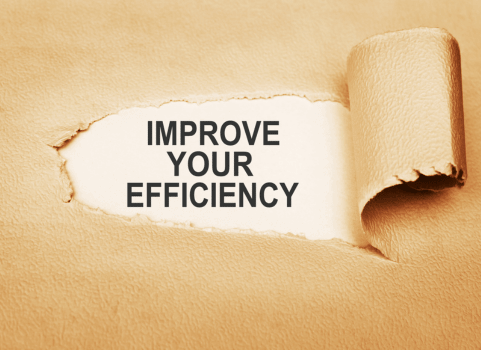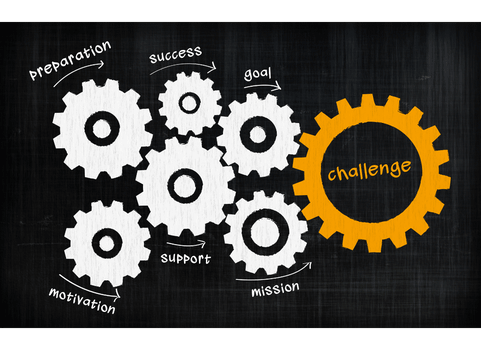
Blockchain Technology Reduces Fraud and Improves Efficiency
Introduction
Blockchain technology has become a game-changer in various industries by tackling significant issues such as fraud and inefficiency. This detailed guide provides an in-depth understanding of blockchain, its significant impact on reducing fraud, and how it can optimize operational efficiency. Let’s explore how blockchain is revolutionizing businesses worldwide.
Understanding Blockchain Technology

Definition of Blockchain
Blockchain is a decentralized digital ledger that revolutionizes data management by securely recording transactions across a network of computers. Each transaction is recorded as a block, and these blocks are linked sequentially, creating an immutable chain of data. This architecture ensures data integrity and transparency, making it nearly impossible for unauthorized modifications or fraud to occur.
How Blockchain Works
Blocks within a blockchain contain transaction data, timestamps, and cryptographic hash functions. These blocks are added to the chain through a consensus mechanism, such as proof of work (PoW) or proof of stake (PoS), ensuring agreement among network participants. Decentralization is a core principle, as no single entity controls the entire network, enhancing security and trust.
Types of Blockchain Networks
Blockchain networks can be categorized as public, private, or consortium blockchains. Public blockchains like Bitcoin are open to anyone, while private blockchains restrict access to authorized users. Consortium blockchains involve multiple organizations collaborating on a shared network, offering enhanced privacy and scalability.
Reducing Fraud with Blockchain
Immutable and Transparent Nature of Blockchain
Blockchain’s immutability and transparency make it a potent tool in combating fraud. Once a transaction is recorded on the blockchain, it cannot be altered or deleted without consensus from network participants. This transparency allows for traceability and accountability, reducing fraudulent activities.
Use Cases in Fraud Prevention
Blockchain finds applications in various sectors for fraud prevention. In supply chain management, blockchain enables end-to-end traceability, reducing counterfeit products and unauthorized modifications. Similarly, blockchain-based identity verification systems enhance security by securely storing and verifying identity information, reducing identity theft risks.
Case Studies and Statistics
Numerous case studies highlight blockchain’s effectiveness in reducing fraud. For example, Walmart implemented blockchain to track the origin of products, resulting in a significant reduction in counterfeit goods. Additionally, blockchain-based digital identity platforms like Civic and uPort offer secure and verifiable identity solutions, reducing fraud in online transactions.
Improving Efficiency with Blockchain

Eliminating Intermediaries
One of blockchain’s key advantages is eliminating intermediaries in transactions. By facilitating peer-to-peer transactions, blockchain reduces transaction costs and accelerates settlement times. This is particularly beneficial in cross-border payments, where traditional intermediaries often introduce delays and fees.
Faster and Cost-Effective Transactions
Blockchain’s decentralized architecture enables faster and more cost-effective transactions. Cryptocurrencies like Bitcoin and Ethereum allow users to transfer value globally with minimal fees, bypassing traditional banking systems. This efficiency extends to other sectors like real estate, where blockchain-based smart contracts streamline property transactions.
Smart Contracts and Automation
Blockchain’s smart contract capabilities automate contract execution based on predefined conditions. This automation reduces manual errors, enhances security, and accelerates contract processing. Smart contracts find applications in various industries, including insurance, supply chain management, and legal agreements.
Benefits of Contractual Agreements
Smart contracts offer several benefits in contractual agreements. They eliminate the need for intermediaries, reduce administrative costs, and ensure contract terms are enforced automatically. For example, insurance claims can be processed and verified more efficiently using blockchain-based smart contracts, reducing fraud and improving customer satisfaction.
Examples of Smart Contract Use Cases
Smart contracts have diverse use cases across industries. In supply chain management, smart contracts automate payment settlements based on delivery milestones, ensuring transparency and accountability. In the healthcare sector, blockchain-based smart contracts facilitate the secure and transparent sharing of patient data among healthcare providers, improving patient care and data privacy.
Now a days Digital Marketing dominating worldwide, If you are interested in Digital Marketing visit Adil The DIGI GURU one of the Digital Marketer with various aspects of digital marketing knowledge
Challenges and Restrictions

Scalability Concerns
Scalability remains a challenge for blockchain adoption, especially in public blockchains handling a high volume of transactions. Solutions such as sharding, layer-two protocols, and blockchain interoperability are being developed to address scalability issues effectively.
Regulatory Challenges
Regulatory frameworks around blockchain and cryptocurrencies vary globally, posing challenges for businesses and investors. Achieving regulatory clarity is essential for widespread blockchain adoption and fostering trust among stakeholders.
Energy Consumption
Proof-of-work (PoW) blockchains like Bitcoin consume significant energy for mining operations. Transitioning to energy-efficient consensus mechanisms like proof of stake (PoS) and adopting sustainable mining practices are crucial for mitigating environmental impacts.
Future Outlook and Innovation
Advancements in Blockchain Technology
Blockchain technology continues to evolve with advancements such as decentralized finance (DeFi), non-fungible tokens (NFTs), and blockchain-based digital identities. These innovations offer new opportunities for businesses and consumers, driving further adoption and disruption across industries.
Potential Impact on Various Sectors
The potential impact of blockchain extends to various sectors, including finance, supply chain management, healthcare, real estate, and entertainment. Blockchain’s ability to reduce fraud, enhance efficiency, and improve transparency makes it a versatile and transformative technology.
Opportunities for Businesses and Consumers
Blockchain presents opportunities for businesses to streamline operations, reduce costs, and enhance trust with stakeholders. Consumers benefit from improved security, transparency, and access to innovative blockchain-based services and products.
The Bottom Line
Blockchain technology is a revolutionary innovation that has the potential to significantly reduce fraud, improve efficiency, and unlock new possibilities across various industries. To fully realize its potential, it’s crucial to understand blockchain’s mechanisms, address challenges, and embrace innovation. As blockchain continues to evolve and gain traction, it will undoubtedly shape the future of business, finance, and technology on a global scale.
FAQ for blockchain technology reduces fraud and improves efficiency
Q1: What is blockchain technology, and how does it reduce fraud?
Ans1: Blockchain is a decentralized digital ledger that records transactions across multiple computers. It reduces fraud by providing transparency, immutability, and cryptographic security, making it difficult for unauthorized parties to manipulate data or transactions.
Q2: How does blockchain technology improve efficiency in various industries?
Ans2: Blockchain improves efficiency by streamlining processes, reducing intermediaries, automating workflows through smart contracts, enhancing data accuracy, and enabling real-time tracking and verification of transactions.
Q3: Can blockchain technology prevent data tampering and unauthorized access?
Ans 3: Yes, blockchain’s cryptographic principles make it extremely secure against data tampering and unauthorized access. Each block contains a hash of the previous block, creating a chain that is resistant to alteration.
Q4: What role does blockchain technology play in enhancing trust and transparency?
Ans4: Blockchain enhances trust and transparency by providing a decentralized, tamper-proof record of transactions that can be verified by all participants. This eliminates the need for trust in a central authority and ensures data integrity.
Q5: Is blockchain technology scalable for large-scale applications and networks?
Ans5: Blockchain technology has scalability challenges, especially with public blockchains like Bitcoin and Ethereum. However, advancements like sharding, layer-two solutions, and alternative consensus algorithms are addressing scalability issues.
Q6: What are some examples of industries benefiting from blockchain’s fraud reduction and efficiency improvements?
Ans6: Industries such as finance, supply chain management, healthcare, real estate, and voting systems are leveraging blockchain for fraud reduction, increased transparency, streamlined processes, and enhanced security.
Q7: Does blockchain technology require specialized skills for implementation and maintenance?
Ans7: Yes, blockchain implementation and maintenance require specialized skills in areas like cryptography, programming (Solidity for Ethereum), smart contract development, blockchain architecture, and cybersecurity.
Q8: Can blockchain technology be integrated with existing IT infrastructure and systems?
Ans8: Yes, blockchain technology can be integrated with existing IT infrastructure and systems through APIs, middleware, or hybrid solutions. However, careful planning and consideration of compatibility, data migration, and security are essential.



[…] NeoReach collaborates with seasoned Web3 marketers who possess a comprehensive understanding of blockchain technologies and target audiences, such as protocols, dApps, exchanges, and […]